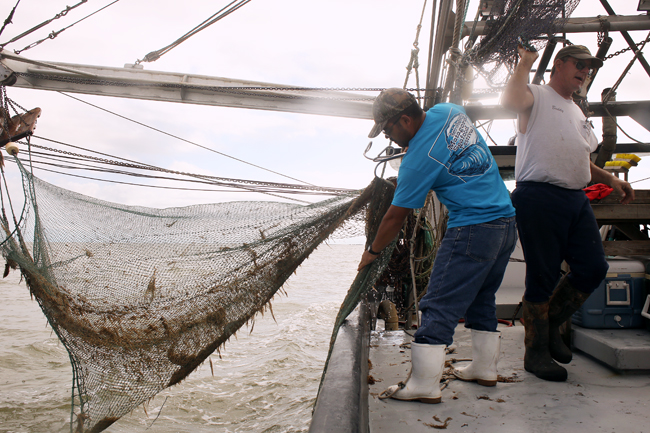Editor’s note: This is the third editorial in a series covering the lasting impact and future outlook of the State Water Implementation Fund for Texas, or SWIFT, which was established in a statewide referendum on Nov. 5. We supported the creation of the fund and the initial $2 billion investment that went into it, but recognize that the fight to preserve Texas’ supply of fresh water is far from over. Be sure to check out the first and second editorials as well.
Matagorda Bay is in a tough spot. The bay, which is the second-largest estuary on the Texas Gulf Coast, sits at the mouth of the Colorado River, and its ecosystem depends on the river’s consistent delivery of fresh water. That water supports its populations of fish, shellfish, waterfowl and other marine life. Those populations in turn support one of Texas’ largest fishing fleets and a host of tourism-based local businesses that rely on the bay’s natural beauty and bounty to stay profitable.
So it comes as no surprise that the bay’s residents grew agitated over the past few months as the Lower Colorado River Authority, or LCRA, which manages the six dams that form the Highland Lakes, openly debated whether or not to shut off the bay’s supply of freshwater and divert it to Austin, more than 160 miles upstream.
On Sept. 18, LCRA requested an exemption from the Texas Commission on Environmental Quality’s requirement that it release the fresh water from the lakes to the bay.
The bay’s residents and state enivornmental groups vehemently protested, pointing out that water restrictions upstream in Austin were not being raised past Stage 2, at which homeowners were still allowed to water their lawns once a week.
A few weeks later fate intervened, as the wettest October on record dropped enough rainfall on the Colorado River Basin to meet the demands of both Austin and the bay without the need for additional water from the Highland Lakes.
On Oct. 16, LCRA withdrew its application for the exemption. In the letter withdrawing the request, LCRA’s General Manager Rebecca Motal made it clear that this wasn’t the end of the issue.
“If the board determines at a later date that emergency relief … is needed, LCRA will file a new application,” Motal said.
In the meantime, LCRA has turned its attention to cutting off flows to rice farmers downstream of Austin in 2014 for what would be the third year in a row.
Those living on Matagorda Bay plan to put as much political pressure as possible on LCRA when the conflict resumes, and are even considering filing a federal lawsuit against it.
As the Texas Water Development Board, or TWDB, begins to determine which of the state’s proposed water projects receive funding and which ones don’t, rural vs. urban water issues like the Matagorda Bay-LCRA dispute will only occur more and more often.
That’s in part because of the vague and sometimes contradictory language of the legislation that created the State Water Implementation Fund. House Bill 4, which established the system by which the money will be distributed, mandates that no less than 10 percent go to rural projects. But it also includes this seemingly contradictory line: “The [TWDB] shall give the highest consideration in awarding points to projects that will … (1) serve a large population; (2) provide assistance to a diverse urban and rural population or (3) provide regionalization.” The bill failed to elucidate whether a “large population” was more important than a “diverse urban and rural population” or vice versa, which seems to defeat the purpose of specifying them at all.
Language like that isn’t the only reason for the unresolved question of how the competition for the water funding will play out, but it certainly doesn’t help.
These disputes are so widely varied that it would be irresponsible to make a blanket judgment about the respective merits of rural and urban water use — they should be evaluated on a case-by-case basis. But in general, more strict and explicit safeguards must be put in place to prevent Texas’ major cities from using their considerable political power to accumulate more than their fair share of water. That political clout, it should be noted, only stands to grow in coming decades.
For example, according to the TWDB’s most recent population projections, Travis County will more than double in size, adding more than a million new Austinites between 2010 and 2060. By comparison, the two counties that enclose Matagorda Bay — Matagorda and Calhoun — are predicted to grow from their 2010 total of 58,083 by little more than 20,000 over the same period. That’s a wide disparity of new and thirsty voters.
As water resources dwindle and the state population rises, the burden of growing water scarcity should be shared as widely as possible, with no one group or area profiting at others’ expense. After all, it’s the State Water Implementation Fund for Texas, not the fund for Austin or Houston or Dallas. One of the TWDB’s major priorities going forward should be to make the division of funds as equitable as possible, lest those major cities continue to enjoy luxuries like green lawns and booming economies while Matagorda Bay and other rural areas cling desperately to life.
















